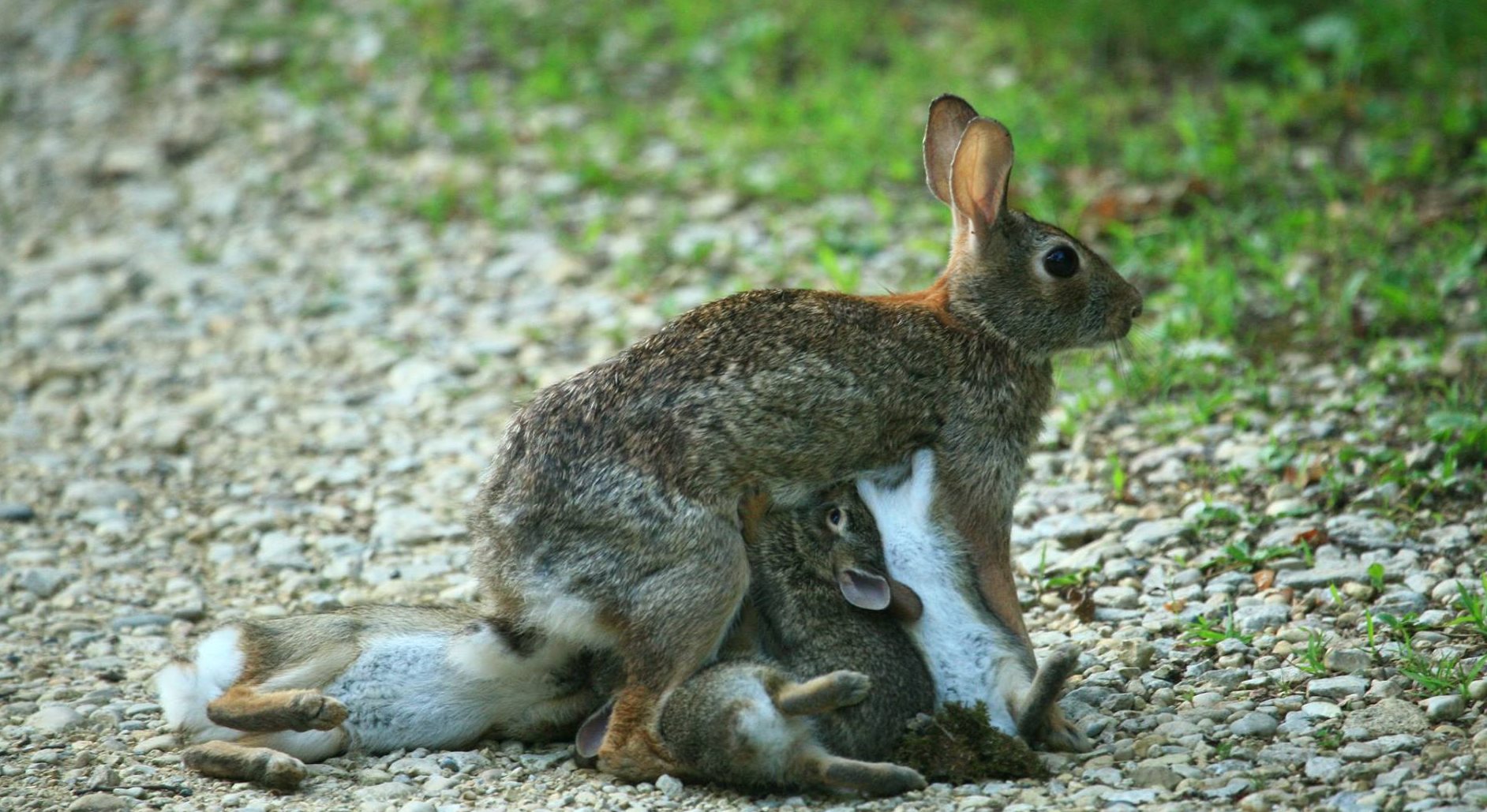Are you looking for the joy of having bunny babies in your life? If so, you’ve come to the right place! Here, you’ll find all the information you need to know about rabbit litters and how to care for your new little “bunny had babies”. From understanding the basics of rabbit behavior and health to learning how to feed and house them, this article will provide you with all the information you need to ensure your bunny babies have a happy and healthy life.
Types of Rabbit Litters
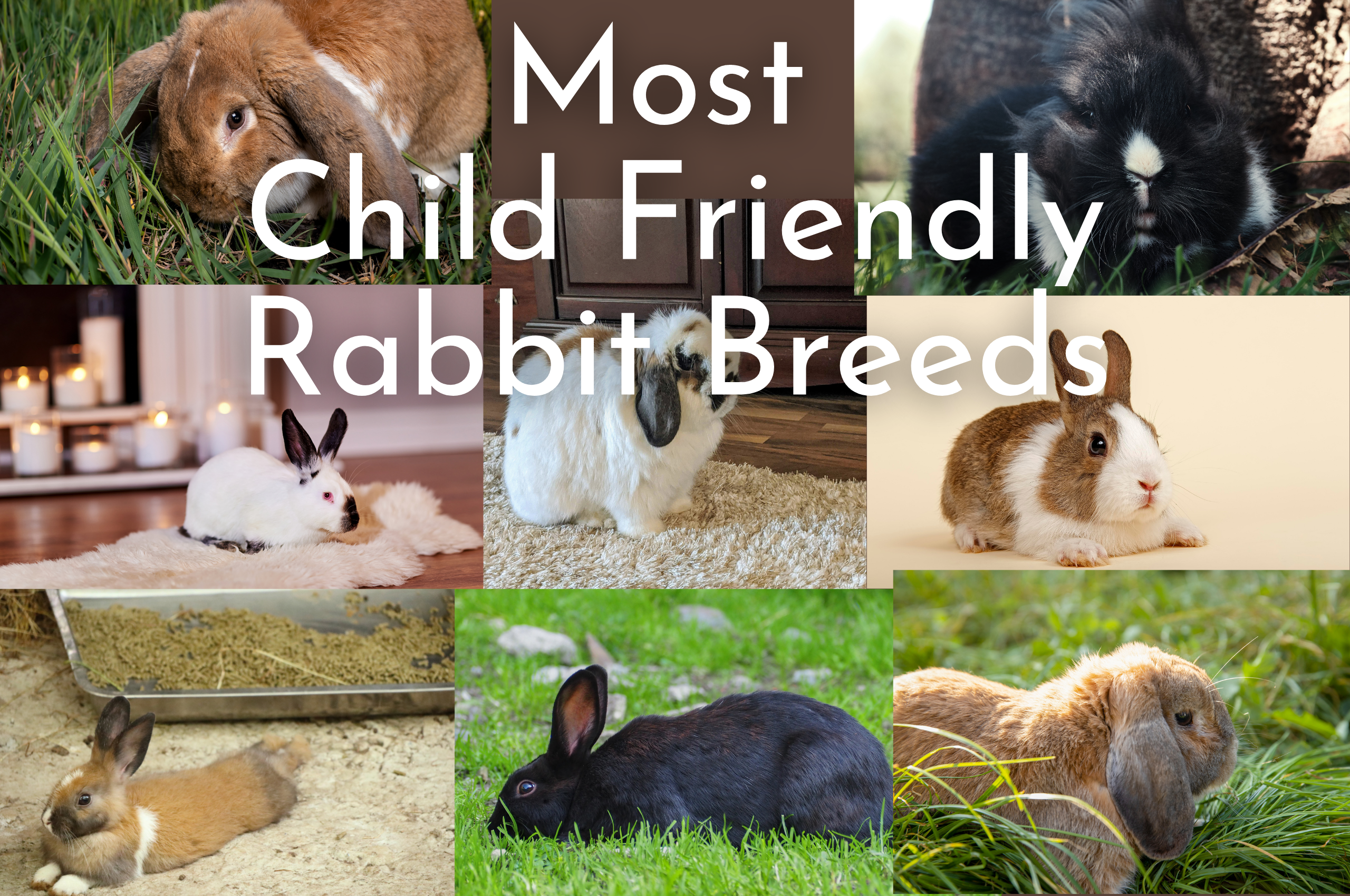
Rabbit litters come in a variety of sizes and consist of anywhere from 2 to 14 baby bunnies. The average size of a litter is 4-6 kits. The number of kits in a litter is determined by the age and breed of the doe, and whether or not it is a first litter for the rabbit mom.
First-time mothers often have smaller litters than experienced mothers. Smaller breeds such as Netherland Dwarfs and Polish tend to have litters of 2-4 kits, while larger breeds such as Flemish Giants or Rex rabbits can have litters of 8-14 kits.
A newborn rabbit litter is a sight to behold! Watching the rabbit mom and babies interact is a beautiful experience. The kits are born blind and deaf, but grow quickly and develop their senses at a rapid pace. It’s amazing to watch them grow and transform into mature rabbits in just a few short weeks.
Care for the Rabbit Mom
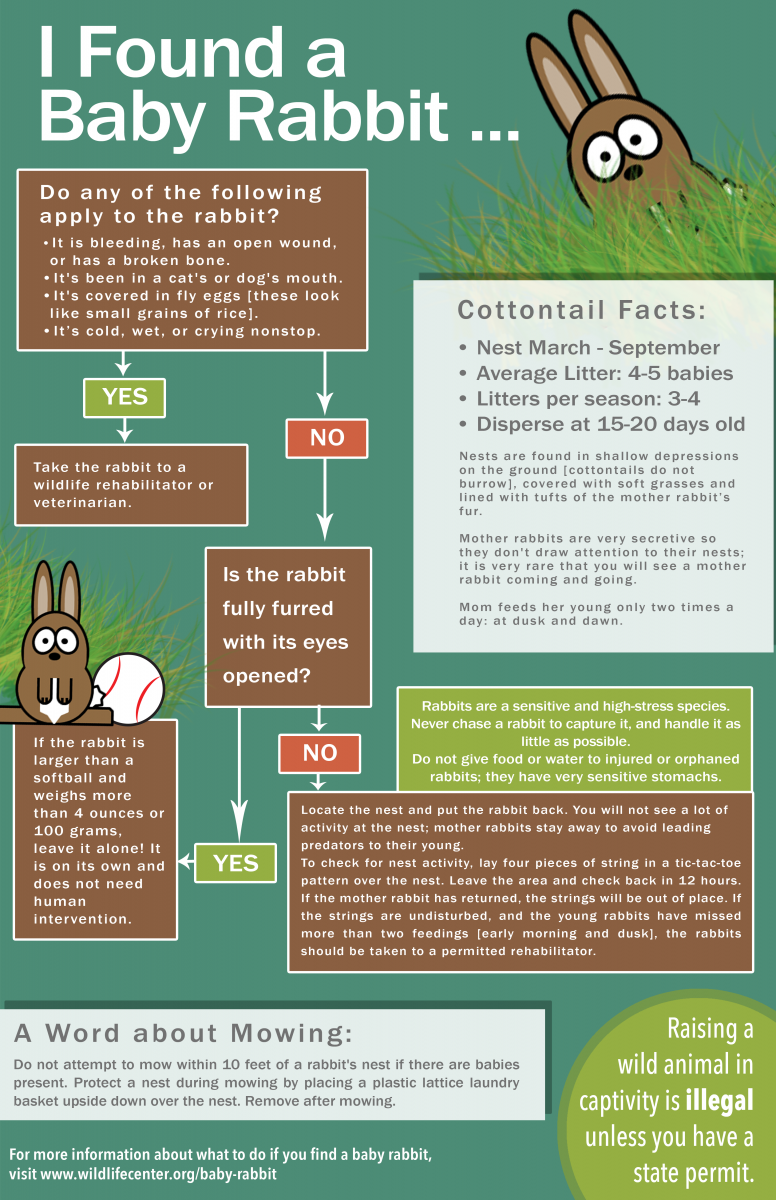
- Rabbits reach sexual maturity at a young age: Female rabbits are able to conceive as early as four months old, and male rabbits can be fertile from five months of age.
- Rabbits have a short gestation period: Rabbit pregnancies last an average of 28 to 33 days, with litters ranging from two to twelve.
- Rabbits are prolific breeders: A female rabbit can produce up to eight litters in a year, with a total of 72 offspring.
- Rabbits require special care: Rabbits are prone to pregnancy and birth complications, so it is important to provide the mother with a safe and comfortable environment.
- Rabbits need a high-fiber diet: A mother rabbit needs to eat a high-fiber diet to ensure that she can produce enough milk to nourish her babies.
- Rabbits need plenty of exercise: Rabbits need plenty of exercise to stay healthy and fit during pregnancy and to give birth to healthy babies.
- Rabbits need quiet and privacy: It is important to provide a quiet and private environment for the mother rabbit during her pregnancy and while she is nursing her babies.
- Rabbits need regular veterinary care: Regular veterinary visits should be scheduled to ensure the mother rabbit is in good health and to check for any potential issues with the pregnancy or birth.
Caring for the Rabbit Babies
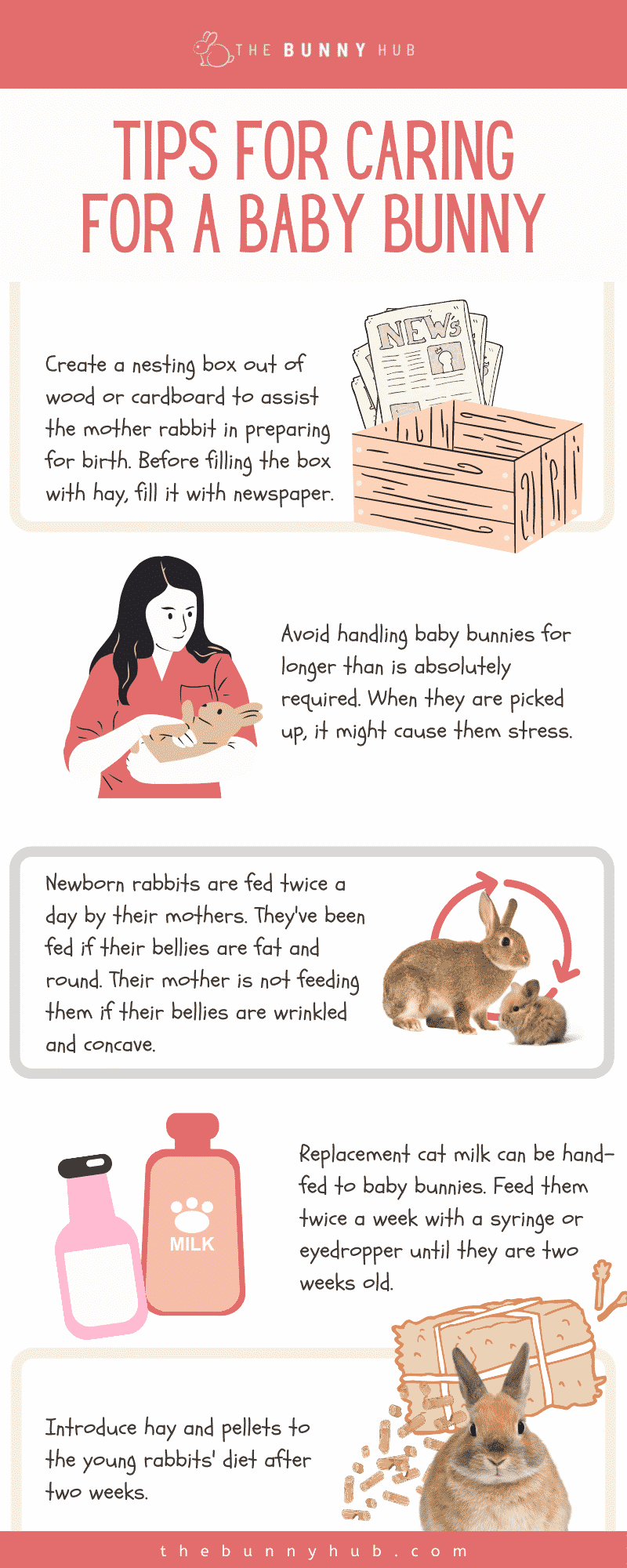
- Feeding: Rabbit babies are born with eyes closed. They will begin to open their eyes and start to explore their environment within 10 to 14 days. The doe should still be nursing the litter, providing them with all the essential nutrition they need to grow. After 4 weeks, you can begin introducing them to hay and other fresh foods.
- Sanitization: The hutch should be cleaned regularly, as rabbit litters tend to attract fleas, mites, and other parasites. Make sure to keep it dry and free of debris.
- Socialization: Rabbit babies should be handled from an early age. This will help them become comfortable with humans and less skittish around people.
- Health: Rabbit babies are susceptible to diseases, so make sure they are vaccinated as soon as possible against common rabbit illnesses. It’s also important to check their weight regularly and to make sure they are growing properly.
- Spaying and Neutering: Spaying and neutering your rabbit babies is important for preventing overpopulation of rabbits. It also helps ensure they live a longer and healthier life. Spaying and neutering should be done when they are between 4 and 6 months old.
Finding a Vet for Your Rabbit
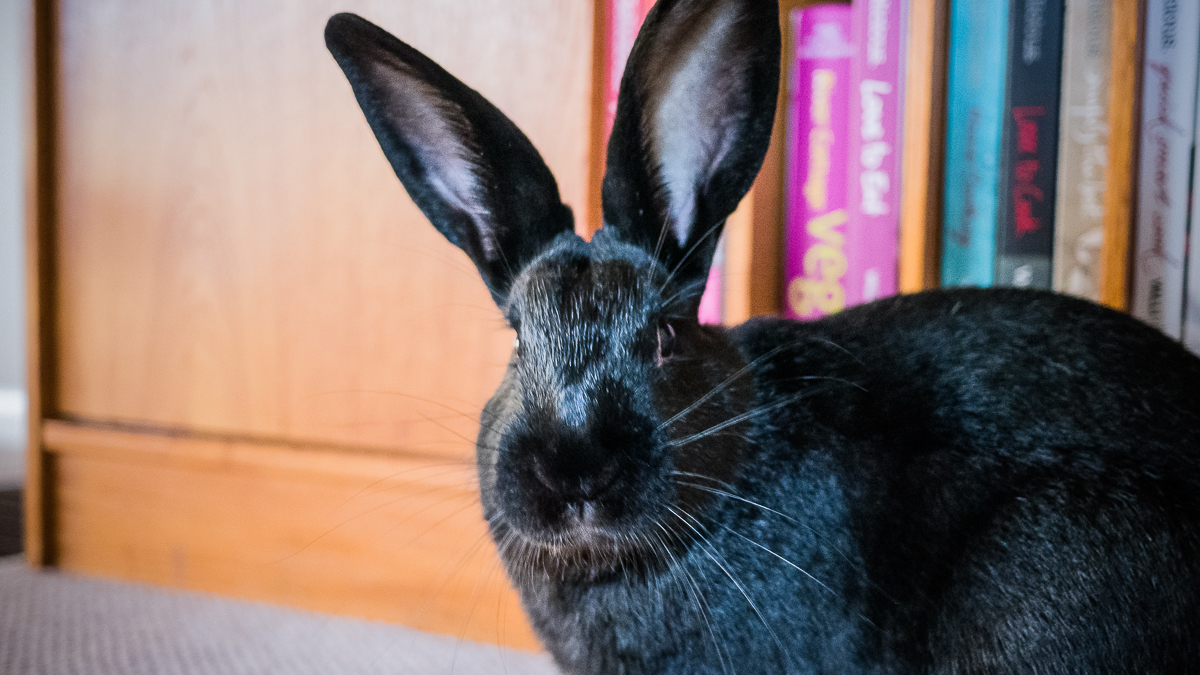
When you first bring home a bunny, you should begin looking for a veterinarian who is experienced with rabbits. Ask friends and family who have rabbits, or check with your local animal shelter for referrals. A good vet should be able to answer questions about diet, housing and health care for your rabbit.
You may also want to find out if the vet you’re considering offers preventive health care for rabbits, such as annual exams, vaccinations, and spaying or neutering. Another important factor to consider is the cost of services, including whether the vet offers any discounts or payment plans.
When you visit the vet, pay attention to how he or she interacts with your rabbit. A good vet should be gentle, patient and willing to take his or her time with your rabbit. Make sure the vet is willing to answer all your questions, and take the time to explain any treatments or procedures.
Finally, make sure to ask if the vet has experience with emergency care for rabbits. Find out if the vet is available after hours or on weekends, and if there is a clinic that provides emergency care if needed.
Once you find a vet you and your rabbit like, make sure to establish a relationship and keep your pet’s vaccinations and health records up to date. This will help ensure your rabbit stays healthy and happy for years to come.
Feeding the Rabbit Mom and Babies
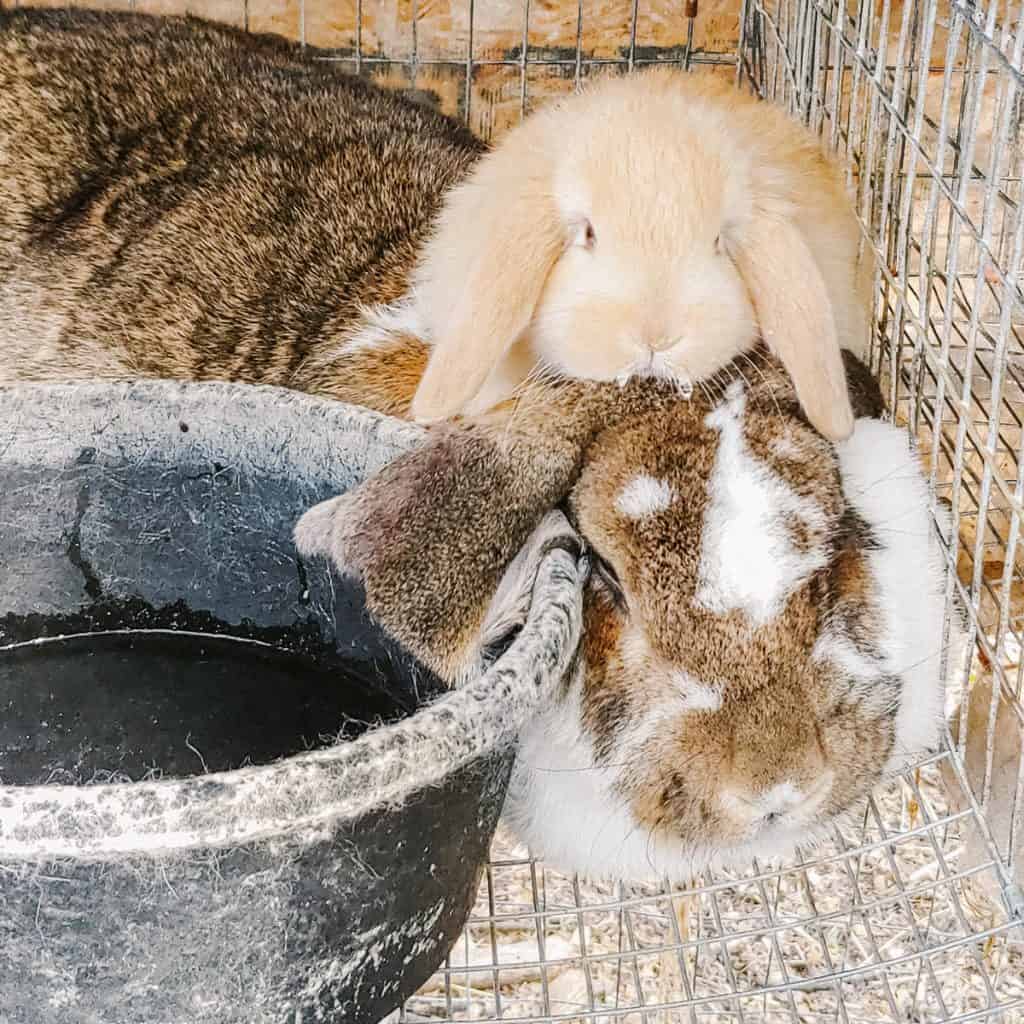
When feeding a mother rabbit and her litter, it is important to provide a balanced diet of hay, fresh vegetables, and a high-quality pellet or grain mix. It is also essential to ensure that the mother has enough food to support her milk production, as well as enough to feed the babies. Pellets should be fed in moderation, as too many can lead to obesity.
Feeding the Mother Rabbit
The mother rabbit needs a high-quality diet of hay, fresh vegetables, and a small amount of pellets or grain mix. Hay should make up the bulk of the diet and should be the first thing offered each day. Fresh vegetables should be fed in moderation, as too many can lead to digestive issues. Pellets or grain mix should be given in small amounts and should be limited to about one tablespoon per day.
Feeding the Babies
Once the babies are weaned, they should be eating the same diet as the mother. They should have access to hay at all times, and a small amount of pellets or grain mix. Fresh vegetables should also be available, but should not make up the bulk of the diet. Babies should be monitored to ensure they are eating enough and gaining weight.
Table of Feeding Amounts
| Food | Mother | Babies |
|---|---|---|
| Hay | Unlimited | Unlimited |
| Vegetables | Moderation | Moderation |
| Pellets/Grain Mix | 1 tablespoon/day | Small amount daily |
Housing the Rabbit Mom and Babies
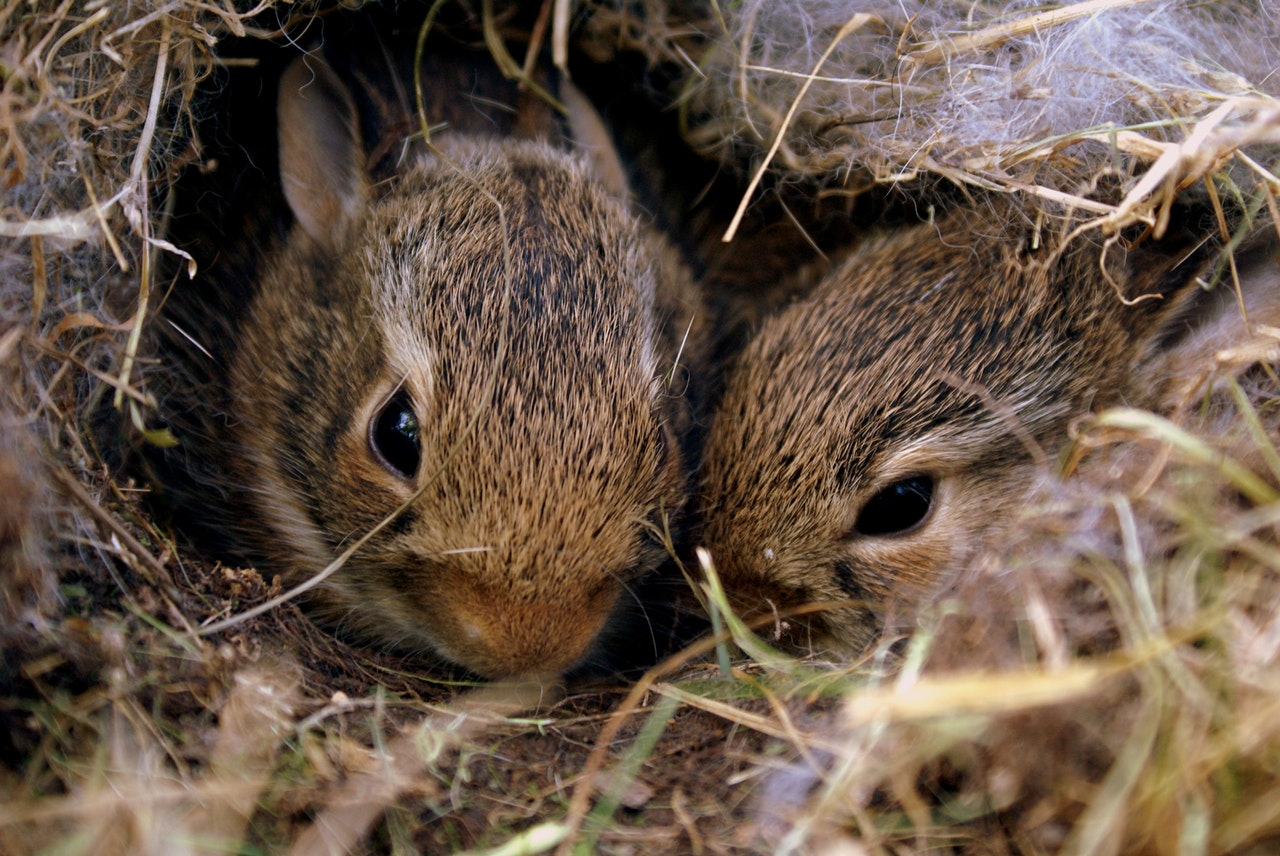
Providing a safe, comfortable, and secure environment for your rabbit family is essential. The ideal setup for a mother rabbit and her litter is a large, roomy cage with plenty of space for the mom and her bunnies to move around. The cage should be made of sturdy materials and have a solid floor, and should be big enough for the mother rabbit to move around, lie down, and groom herself and her babies.
The cage should also have a nest box or some kind of hiding place for the mother rabbit to retreat to if she needs peace and quiet. Additionally, the floor of the cage should be lined with hay or straw to provide the mother rabbit with a comfortable and warm place to lay down and nurse her babies.
A temperature-controlled environment is also important for the mother and her babies. The ideal temperature for a rabbit nursery is between 65-75°F (18-24°C). If the temperature is too cold, the mother rabbit may not be able to keep her babies warm enough, and if it is too hot, the bunnies may become overheated.
Finally, the cage should be kept clean to prevent the spread of disease and parasites. Be sure to check the cage daily for soiled bedding, wet spots, and evidence of mites or other parasites. Clean the cage regularly and provide fresh food and water for the mother rabbit to keep her and her babies healthy and happy.
Socializing the Rabbit Mom and Babies
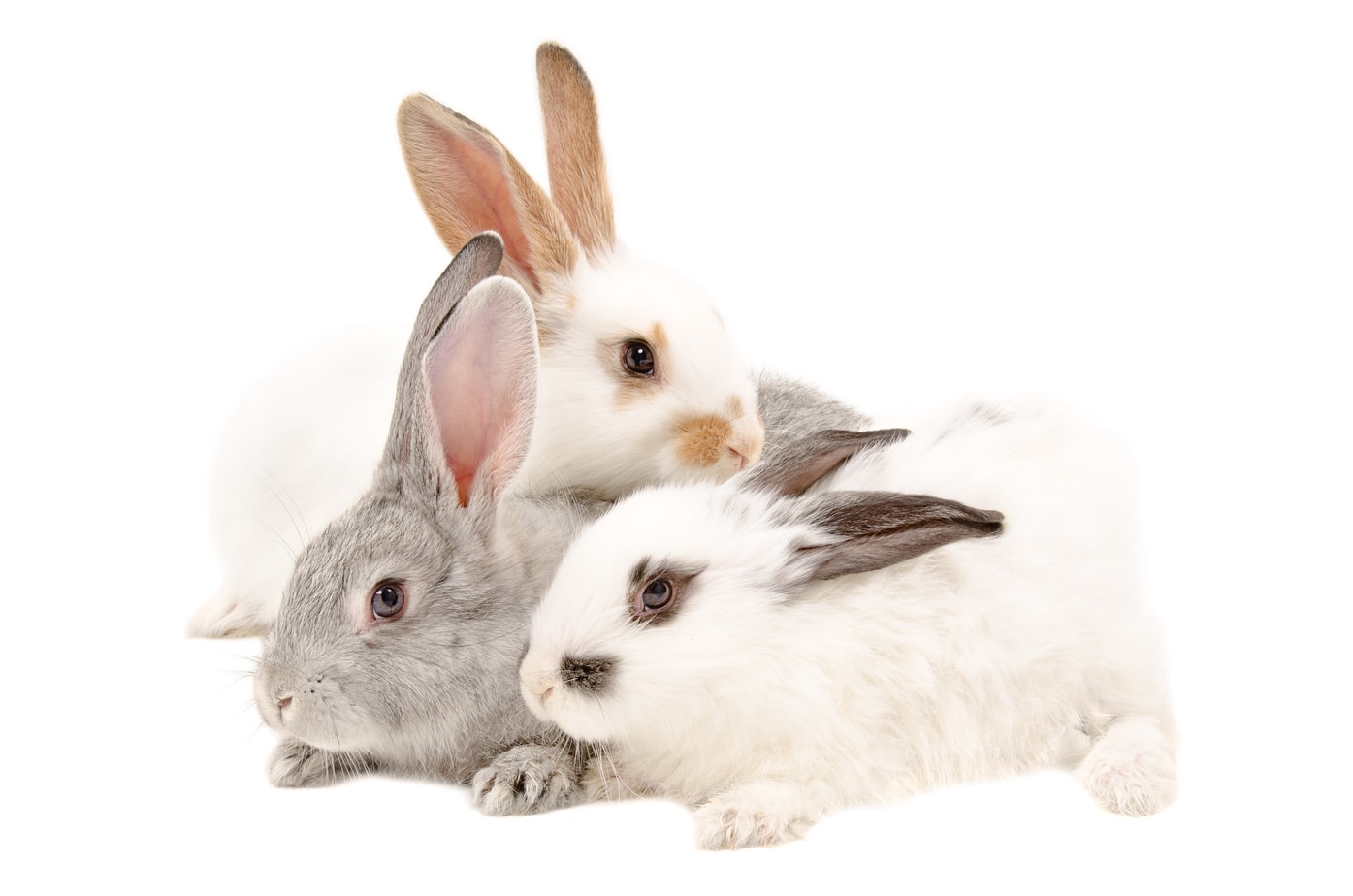
- Bonding: Rabbits will bond with their babies and should be left with them until they are weaned. It is best to avoid handling the babies during this time, as it can cause stress to the mother and can even cause her to reject them.
- Protection: The mother rabbit will protect her babies from any perceived threats, so it is important to minimize any stressors in the environment. This includes loud noises, sudden movements, and other animals.
- Feeding: The mother will feed her babies milk from her body and will also bring them food from outside the nest. This is why it is important that the mother rabbit has access to outdoor space and to a variety of food sources.
- Socialization: The mother will also interact with her babies, teaching them how to interact with other rabbits and helping them learn how to be part of the family. This is why it is important to socialize the mother rabbit with other rabbits and humans before the babies are born.
Grooming the Rabbit Mom and Babies
Bunny had babies? Congratulations! As a new rabbit mom and babies, grooming is important to keep them healthy. Rabbits are fastidious creatures and need to be groomed on a regular basis, especially during the times when they are shedding their fur.
| Grooming for Rabbit Mom | Grooming for Rabbit Babies |
|---|---|
| Brush and comb for removing mats, tangles and debris | Brush and comb for removing debris |
| Nail trimming if necessary | Mild shampoo bath |
| Mild shampoo bath | Nail trimming if necessary |
For the rabbit mom, use a soft brush and comb to remove mats, tangles and debris. If necessary, trim the nails of your rabbit. A mild shampoo bath can also be given if needed.
For the rabbit babies, use a soft brush or comb to remove debris. A mild shampoo bath can be given as well as nail trimming if necessary.
Remember to be gentle and patient when grooming your rabbit mom and babies. This will help them to get used to grooming and will also keep them healthy and happy.
Frequently Asked Questions
What is the Average Size of a Rabbit Litter?
The average size of a domestic rabbit litter is typically five to six bunnies, with newborns weighing in at 1-2 ounces each. However, some rabbits may have litters of up to nine or more bunnies. Some breeds, such as the miniature breeds, are likely to have smaller litters. Larger breeds may have litters of up to twelve bunnies.
How often do rabbits give birth?
Rabbits can reproduce quickly, with litters of up to twelve babies at a time. Female rabbits are able to conceive again immediately after giving birth, so they can potentially have up to five litters a year. The average rabbit gestation period is 28 to 31 days.
What should I be aware of when caring for baby bunnies?
- Temperature: Baby bunnies need to be kept warm, so ensure their environment is not too cold. Make sure the temperature is between 75-85°F (24-30°C).
- Feeding: Baby bunnies should be fed a diet that is high in protein and fiber. Provide them with a balanced diet of hay, fruits, and vegetables, as well as specially formulated rabbit food.
- Cleanliness: Baby bunnies should be kept in a clean and hygienic environment. Clean the cage and bedding regularly, and provide them with fresh and clean water every day.
- Socialization: Baby bunnies need to be socialized from an early age. Handle them gently and regularly so they become used to being around humans.
- Veterinary Care: Baby bunnies need regular veterinary check-ups and vaccinations. Make sure they are up-to-date with their shots and have all the necessary health checks.
How long do baby bunnies stay with their mother?
Baby bunnies stay with their mother for about 8-10 weeks. During this time, the mother rabbit will take care of her babies and provide them with food, warmth, and protection. The mother rabbit will also teach her babies important life skills.
At around 8-10 weeks, the baby bunnies will be ready to leave their mother and venture out into the world on their own. Here’s what they will have learned while they were with their mother:
- How to groom and care for themselves
- What foods to look for and how to find them
- Where to find shelter and protection
- How to recognize potential predators and how to avoid them
By the time the baby bunnies are ready to leave their mother, they will be well equipped with the knowledge and skills they need to survive on their own.
What type of food should I provide for baby bunnies?
Young bunnies: Newly-born bunnies should be fed a diet of high-quality hay and alfalfa pellets. Avoid feeding them too much alfalfa, as it can cause gut issues. Young bunnies should have hay and pellets available at all times.
Growth period: As bunnies enter the growth period, they should be fed a diet of hay, alfalfa pellets, and small amounts of fresh vegetables. Feed them one cup of vegetables for every 5-6 pounds of body weight.
Adult bunnies: Adult bunnies should have hay available at all times and should be fed a diet of hay, alfalfa pellets, and fresh vegetables. Feed them one cup of vegetables for every 5-6 pounds of body weight.
- High quality hay
- Alfalfa pellets
- Small amounts of fresh vegetables
Conclusion
Rabbit litters can bring a lot of joy and fun to your home. With the right preparation and care, your bunny babies will thrive and provide much entertainment. Make sure to provide them with a safe and comfortable environment and a nutritious diet, and you’ll be sure to have happy and healthy pets.
